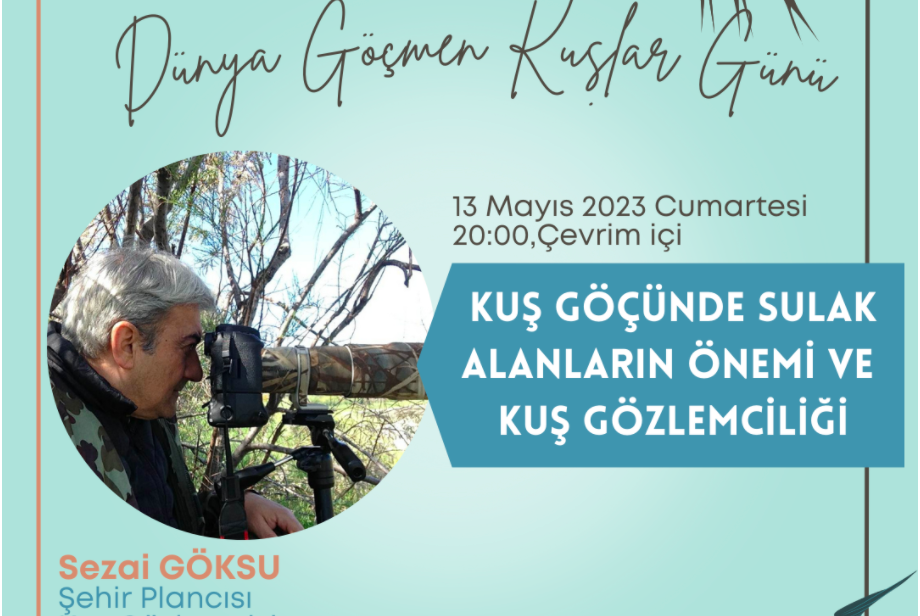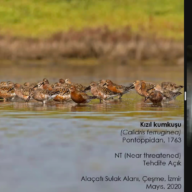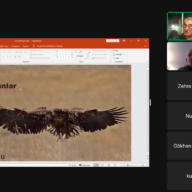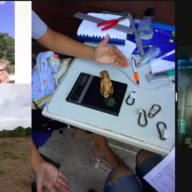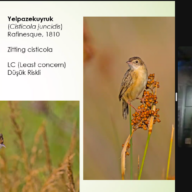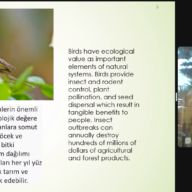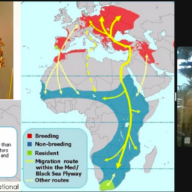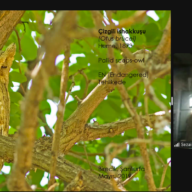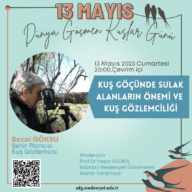Istanbul Medeniyet University organized a seminar on the “World Migratory Birds Day”, which coincides with May 13 this year, in order to increase people’s sensitivity to the threats encountered by migratory birds during their journey and to raise awareness for the protection of their habitats.
IMU Sustainability Office hosted city planner and bird watcher Sezai GÖKSU to discuss “The Importance of Wetlands in Bird Migration and Bird Watching” on World Migratory Birds Day, which was discussed with the theme of “water” this year. Our vice rector Yaşar BÜLBÜL was the moderator of the seminar, which was held on Saturday, May 13, 2023, at 20:00, online via Zoom platform and open to the participation of all interested parties.
Stating that city and regional planning studies provide important data in terms of natural areas and make important decisions on these areas, GÖKSU started his presentation by stating that these studies are ultimately human-oriented. He stated that although the planning studies deal with the right to life and the city of all people through the concept of public interest, many living things also live in these areas, and pointed out that these concepts should be questioned in order to address the right to life of these living beings. At this point, he stated that it is of great importance to include professionals such as biologists, zoologists and ornithologists in the multidisciplinary physical planning processes.
Stating that there are 8.7 million living species today, GÖKSU explained the basics of classification in the living world and explained the classes in which birds are found. There are more than 10,000 recorded bird species in the world; however, he emphasized that 13% of them are under threat due to habitat loss. Explaining the geographical distribution of these species, GÖKSU stated that Turkey has an important species richness with 500 recorded bird species. He explained that the number of species seen also varies according to the biodiversity in the region, seasonal patterns and location on migration routes. Stating that every species should be considered as a part of its habitat, GÖKSU pointed out that birds are of great importance in this habitat in terms of insect and rodent control, plant pollination and seed dispersal. He explained that Turkey, located in the Western Palearctic region, has an important place as an accommodation and feeding place in terms of south-north migrations between wintering and breeding regions. Therefore, he emphasized that great importance should be attached to the conservation of protected areas such as forests and wetlands in Turkey.
In the second part of his presentation, GÖKSU talked about bird watching and bird photography and the equipment required for these studies. He stated that while for bird watching, especially in open and wet areas, it is necessary to be stationed at a certain point and to wait for the bird to come, in order not to be noticed by the birds. However, he drew attention to the fact that hunting pressure, deforestation and excessive urbanization in Turkey make birds more timid and therefore difficult to photograph. Stating that the photographs taken are of great importance not only for the identification of the species, but also for the observation of the behavior of the species and the recording of the migration behavior, GÖKSU said that the observation databases created with the records of the volunteers are the most important tools for the follow-up of biodiversity. He pointed out that the observations entered into the system in recent years revealed that the migration routes started to drift due to the climate crisis. He gave information about the digital environments where individuals can upload these observations individually and their usage, and pointed out that these databases can also provide important information for planning studies. He explained that in addition to these digital databases, ringing studies are carried out to record birds and observe their behavior in Turkey.
In the continuation of the presentation, GÖKSU, through the photographs he took, provided information on endangered species such as the striped hawk and small vulture in Turkey; also on species that could be endangered in the near future such as the red sandpiper. The seminar ended after a question and answer session.
You can access the seminar recording by clicking here.

